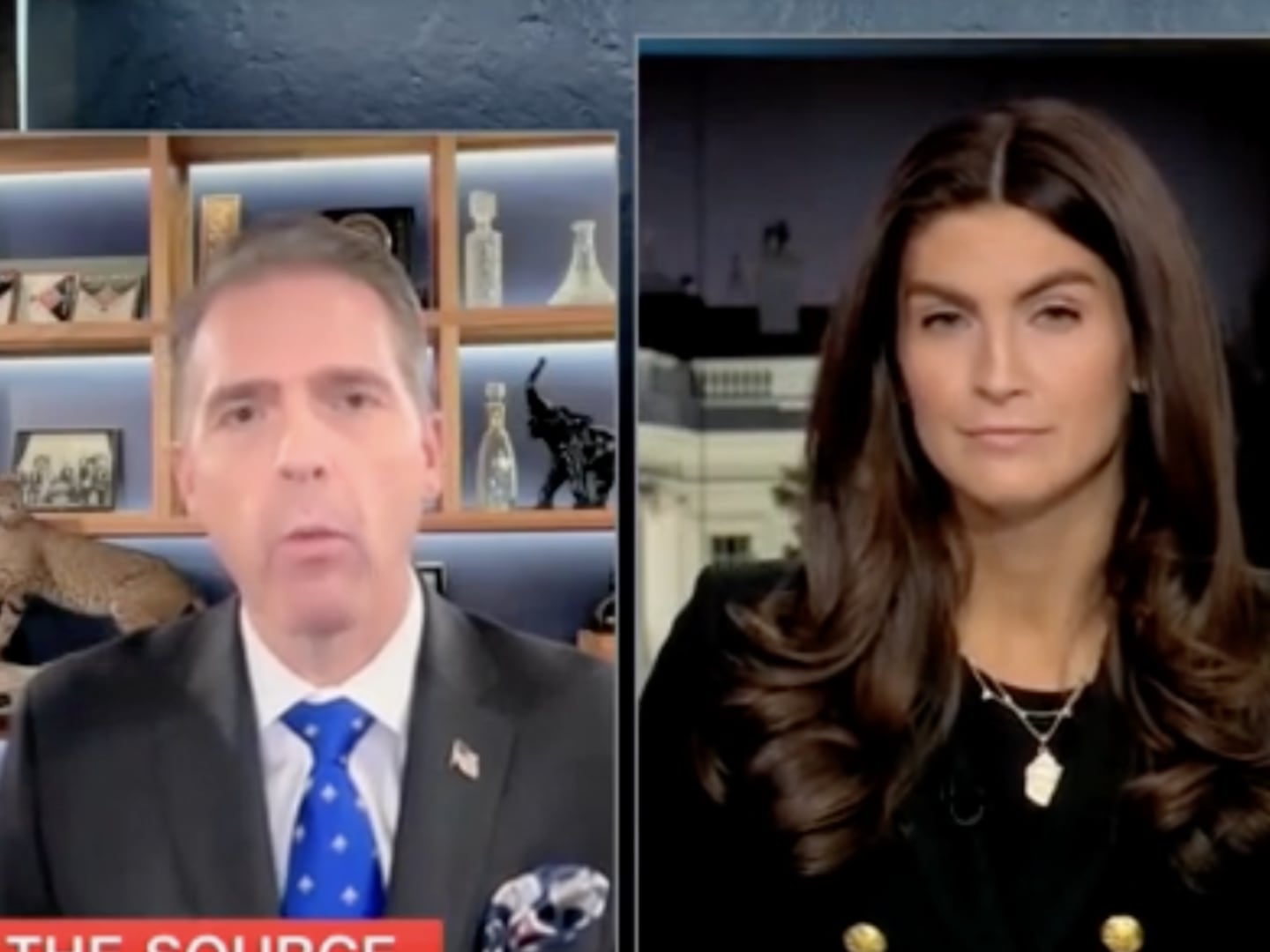Virgin Atlantic Flight 3 from London descended through the gray summer haze and touched down at JFK Airport in New York just ahead of schedule. The Airbus A340-600 taxied up to the gate, its nose painted with the word ”Dancing Queen” and a woman in a swimsuit waving a Union Jack in each hand.
A baggage vehicle rolled up and the operator opened the door to the forward baggage compartment on the right side of the fuselage. He pointed to what had been the last item loaded aboard, a metal cargo container that was cocooned in plastic and stenciled with “AKE 0026 US.”
“The thing is there!” the operator announced.
He was addressing members of the NYPD Intelligence Bureau and the Port Authority Police who stood waiting on the tarmac. A Port Authority armored vehicle with a heavily armed emergency service team was nearby.
All eyes were on the cargo container as it was transferred to a trailer towed by a small airport vehicle. The vehicle immediately set off. It was escorted by a small convoy that included the armored vehicle and a black unmarked car driven by Inspector Steven D’Ulisse of the intelligence bureau.
On other days, the Intelligence Division had planned and implemented protection for any number of visiting dignitaries, most prominently including the president. The cops will be doing the same for the pope later this month.
The usual watchful care was now being accorded to this metal container as if there were a living being inside as it rolled up to a cargo facility. Hundreds of millions in cash and gold routinely pass through this portal, but it was clear that this was something whose value was beyond the measure of money.
And the cops were not just standing guard lest anyone try to steal the contents. They were making sure that no harm came to it. And they were doing so with a hint of wonder, a touch of schoolkid enthusiasm that bubbled just under their all-pro vigilance.
A Port Authority cop double-checked the identification tag worn by the forklift operator before giving the go-ahead for the container to be unloaded. The forklift beep-beeped as it backed in through the big open doorway. The cops followed it to the far side of the building.
There, an NYPD detective arrived from the terminal with two civilian women who had been on Flight 3 from London. The detective had met the women at the gate and expedited their way through customs.
The women now approached the cargo container and confirmed it was the correct one. Workers set to unwrapping the plastic and snipping the blue metal seals on the latches.
“Can we check these?” one of the women asked.
She examined the seals to ensure they were the same ones that had been affixed at the airport in London. The container was opened, and two civilian men stepped inside to remove a large green wooden box.
A red sheet of paper bearing the number 93248461044 was taped to the top of the box. Warnings had been stenciled on the wood in red.
“FRAGILE…MUST RIDE FLAT…FRAGILE.”
The two men each took an end of the green box and carried it to a white van that had backed up to the far side of the building. They deposited the box inside and secured it with gray canvas straps before covering it with two mover’s blankets.
Inspector D’Ulisse was the senior representative of the intelligence bureau on the scene, and he could have just detailed a detective to check the van for explosives or any other possible threats. But he set to doing it himself, inspecting the interior and then getting down to check the underside and the wheel wells and the spare tire despite being attired in a suit and a white dress shirt and tie. He rose and brushed his hands off against each other when he was satisfied that all was as it should be.
A heavily armed NYPD emergency service team took the place of its Port Authority equivalent as the time came to set off from the airport, just as they would with a visiting dignitary. Everybody had been briefed on a primary route, along with alternatives if any were needed. A series of checkpoints was marked off that would determine which trauma center was nearest in the event of an emergency.
On some such missions, the ESU cops are under orders to accompany the rest of the motorcade as it speeds away in the event of an attack. ESU was instructed on this one to remain behind and take on the threat.
“I told them, ‘You stay with the fight, we take the package,’” D’Ulisse said.
As the motorcade embarked, D’Ulisse spoke on the phone with NYPD Deputy Commissioner John Miller, the head of the intelligence bureau as well as the department’s counterterrorism effort. D’Ulisse confirmed that they had the package.
“If I had lost it, I wouldn’t be calling you, I’d be on a plane,” D’Ulisse joked.
An aviation unit helicopter codenamed “Raven” for this purpose hovered overhead. A marked highway unit car code-named “Pilot” took the lead spot in the motorcade, bringing along an intelligence bureau detective. D’Ulisse was next in his unmarked car, along with the white van and another unmarked intelligence bureau car and the ESU team. A second highway car brought up the rear to discourage people from passing and cutting in. A third highway car served as a kind of scout, clearing the way to the front and on the flanks while keeping disruption of the traffic to a minimum.
The easy thing to do would have been just to shut the highway down. But the cops now proved anew that they have made a science of moving through the city safely with just flashing lights and little if any use of sirens.
A car was stopped off to the left on the expressway, constituting a possible threat. The highway scout zoomed ahead to place itself between the car and the package.
“Highway posting up,” a voice said on the radio.
The motorcade proceeded on with the helicopter overhead, alerting it to any congestion, suggesting it take Lane 14 at the toll plaza on the Triborough Bridge.
“You’ve got heavy traffic up ahead,” the helicopter radioed.
“Pilot read,” the lead highway car replied, acknowledging the message.
The helicopter circled tightly to keep watch as the motorcade came to the bridge. The arm at the designated lane of the toll plaza remained upright so the vehicles of the motorcade could pass through without pausing.
Soon, the motorcade was heading down the FDR Drive along the east side of Manhattan.
“I’m in contact with the advance,” an intelligence bureau detective said over the radio, meaning a team was in place at the destination.
The motorcade took the East 34th Street exit. The way across town was complicated by a man who leaped from his car to berate another driver in a fit of road rage.
“You can’t make this stuff up,” D’Ulisse said.
The flashing emergency lights convinced the incensed motorist to return to his car. He was still in a fury and almost lurched in among the motorcade, but was stopped at an upraised hand from D’Ulisse.
The motorcade proceeded on with the help of a number of traffic agents who happened to have been already posted there to keep the workday traffic moving amid some construction.
“We have intersection control,” a voice announced on the radio. “Tell advance we’re five minutes out.”
“This is great,” D’Ulisse said.
The motorcade turned right at Sixth Avenue, passing crowds of shoppers and tourists in Herald Square who turned to gawk.
“They think it’s some politician,” D’Ulisse noted.
Six blocks uptown, the motorcade turned right along the lower edge of Bryant Park and came to a rear entrance to the New York Public Library. The advance team kept gawkers out of the way as the van backed into an open portal.
“Maybe it’s treasure,” a boy who looked to be about 10 said to a man who appeared to be his dad.
The two men who had loaded the green box now removed the blankets and the canvas straps. One of the civilian women had been riding in the van, and she was now joined by the other, who had been in one of the police cars.
The two are experts with the library’s famed manuscripts and archives division, and they supervised the unloading of the box. The two men both wore T-shirts reading “Marshall Arts,” the name of a Long Island specialty moving company that works in conjunction with Masterpiece International.
“We had to tip it last time,” one of the men told the women.
“That’s OK,” one of them replied.
The men did indeed have to tip the box to get it in through the door, just as they had when they were carrying it out some months before. They continued to a secure location in the library along with the two women and the intelligence bureau cops.
One of the women used a ratchet to remove several screws. She set aside the top of the box and lifted two protective layers of what looked like Masonite. She then set to removing what had been lent to an exhibition in England and had now been safely returned.
She checked some seals that she had secreted inside the outer covering, a red one with a pineapple imprint and another red one with a fish. There was also a wavy line of sealant whose undulations she had photographed as a reference. She confirmed that nothing had been disturbed.
The intelligence bureau cops thought to ask if the other cops in the escort could also get a look. The highway cops came in along with the ESU cops, who stood with their body armor and automatic weapons. They gazed as wondrous as schoolkids at a copy of the Declaration of Independence that had been handwritten by Thomas Jefferson himself.
As one of the women at the library now told the cops, Jefferson had made this copy so he could restore for his own benefit sections he had included in an early draft but which had been cut during the wrangling over the final official version. Jefferson had underlined the parts he had restored, including an explicit condemnation of slavery that had been excised at the insistence of representatives from South Carolina and Georgia.
But Jefferson had by all accounts remained satisfied with the spirit of the Declaration. And it was this spirit, along with the very fact of it, that seemed to have the greatest impact on the cops.
The library woman told them that they were lucky to see the document in this lighting, as it is usually displayed in dimness to prevent it from being damaged over time. She reported that the illumination had been restricted to 3 foot-candles in England. She did not feel the need to note the obvious irony in the document being displayed in the country from which it had declared independence.
The cops observed that Jefferson had excellent penmanship. They gazed at the uppercase “UNITED STATES OF AMERICA” and considered that this entity was just an idea when the Declaration was first drafted.
“Unbelievable,” D’Ulisse said.
More than two centuries later, these cops were dedicating their lives to policing the biggest city in what had become the greatest country on Earth. Their ultimate daily mission is to ensure that the decent people of New York enjoy what are described in Jefferson’s precise hand as the “inalienable rights” of “life, liberty & the pursuit of happiness.”
There had indeed been something living in that cargo container, and the life of it shone in these cops’ eyes. They were now beaming with the wonder and excitement that had glimmered in them at the start of the mission. They had known what they would be escorting, and just the thought of it seemed to have touched the part of them that had made them want to be cops in the first place.
At their core, true cops are not jaded cynics. They are believers, patriots in action, sometimes sacrificing all for people they do not even know. It is not for nothing that the coffins of fallen officers are covered with the flag of the country that started out as just a noble impulse.
No doubt Jefferson would have been as delighted as the women from the library so clearly were to see these avowed protectors beholding the Declaration with such unadorned reverence.
“Thank you for helping to bring it home,” one of the library women said.
“It’s not going anywhere soon, right?” D’Ulisse said.
The cops then left the library people to their good work and returned to the city to continue their own.
“See you at the pope,” the ESU sergeant said to the intelligence inspector.






